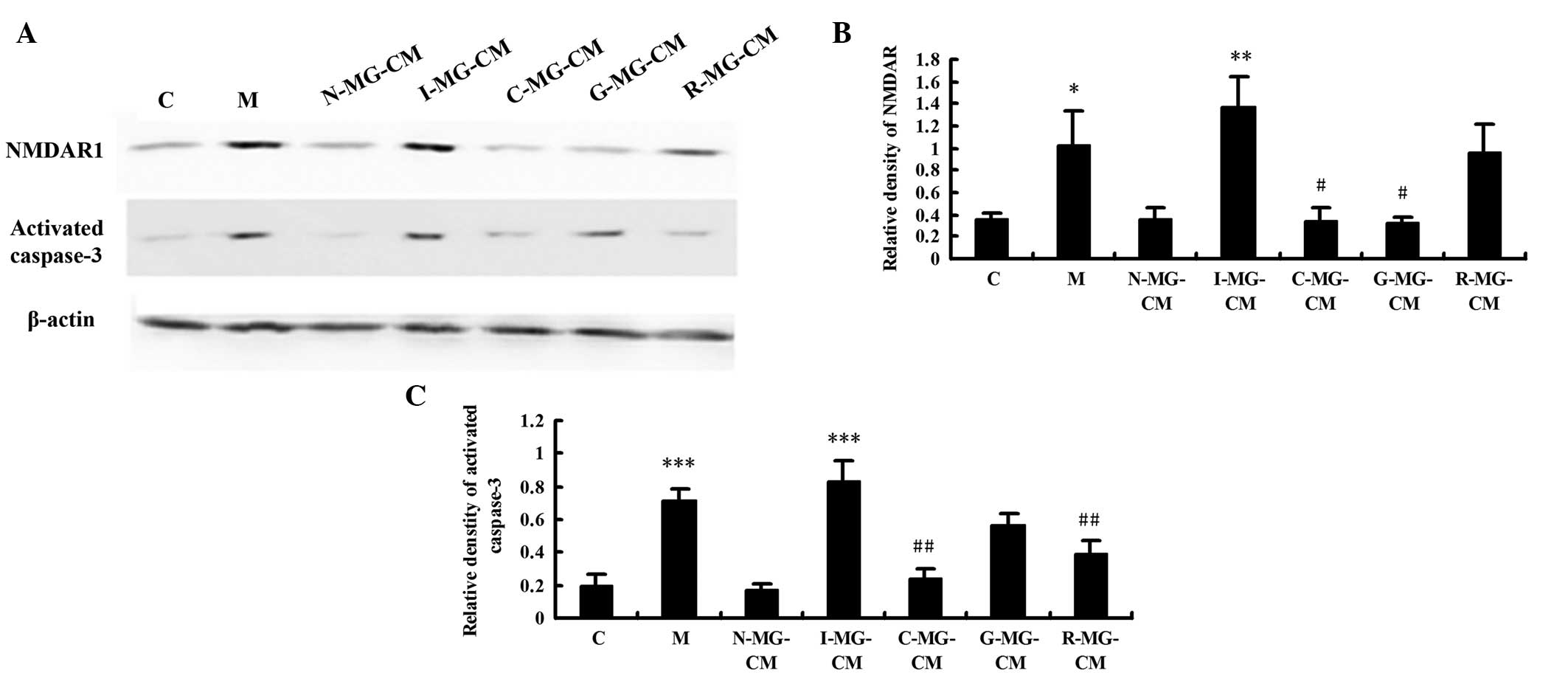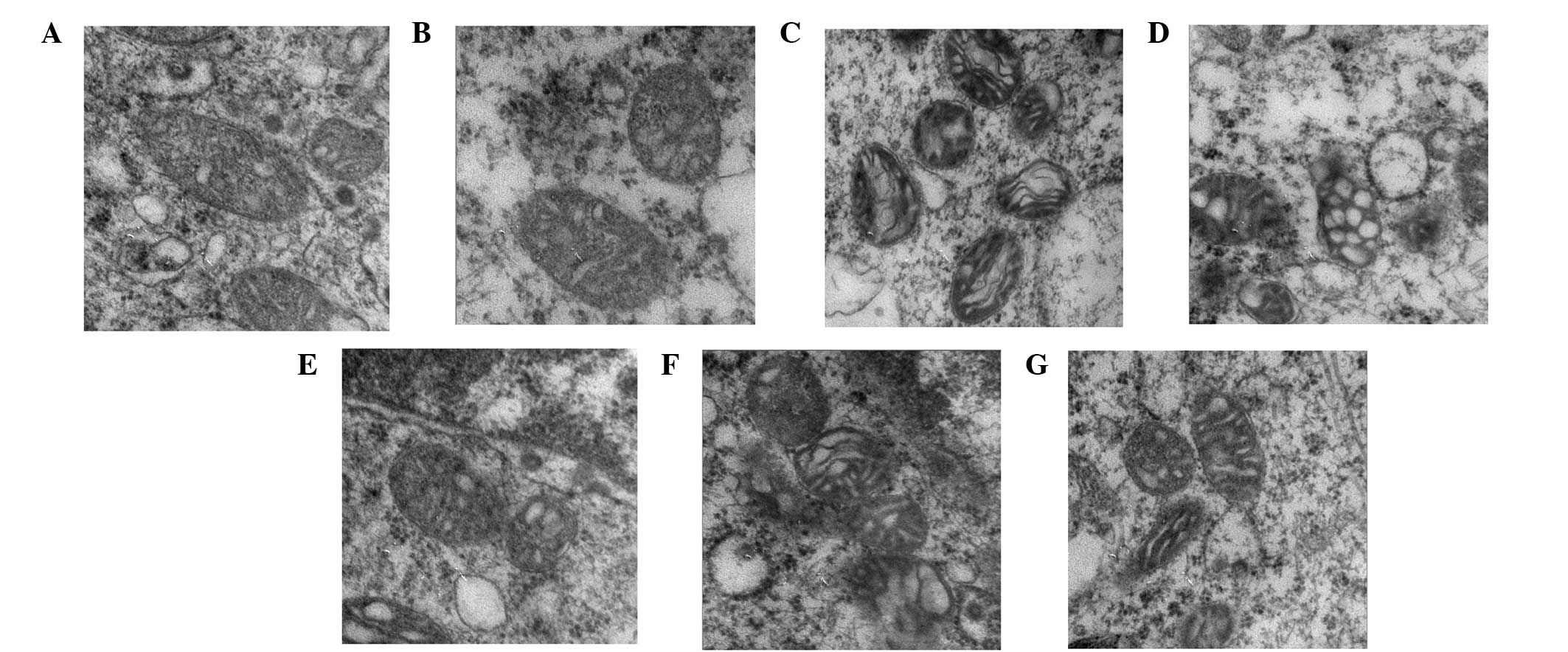|
1
|
Feigin VL, Lawes CM, Bennett DA,
Barker-Collo SL and Parag V: Worldwide stroke incidence and early
case fatality reported in 56 population-based studies: A systematic
review. Lancet Neurol. 8:355–369. 2009. View Article : Google Scholar : PubMed/NCBI
|
|
2
|
Faure S, Oudart N, Javellaud J, Fournier
A, Warnock DG and Achard JM: Synergistic protective effects of
erythropoietin and olmesartan on ischemic stroke survival and
post-stroke memory dysfunctions in the gerbil. J Hypertens.
24:2255–2261. 2006. View Article : Google Scholar : PubMed/NCBI
|
|
3
|
Smadja D, Chausson N, Joux J, Saint-Vil M,
Signaté A, Edimonana M, Jeannin S, Bartoli B, Aveillan M, Cabre P
and Olindo S: A new therapeutic strategy for acute ischemic stroke:
Sequential combined intravenous tpa-tenecteplase for proximal
middle cerebral artery occlusion based on first results in 13
consecutive patients. Stroke. 42:1644–1647. 2011. View Article : Google Scholar : PubMed/NCBI
|
|
4
|
Zhang J, Li P and Wang Y, Liu J, Zhang Z,
Cheng W and Wang Y: Ameliorative effects of a combination of
baicalin, jasminoidin and cholic acid on ibotenic acid-induced
dementia model in rats. PLoS One. 8:e566582013. View Article : Google Scholar : PubMed/NCBI
|
|
5
|
Liu J, Zhou CX, Zhang ZJ, Wang LY, Jing ZW
and Wang Z: Synergistic mechanism of gene expression and pathways
between jasminoidin and ursodeoxycholic acid in treating focal
cerebral ischemia-reperfusion injury. CNS Neurosci Ther.
18:674–682. 2012. View Article : Google Scholar : PubMed/NCBI
|
|
6
|
Lai AY and Todd KG: Microglia in cerebral
ischemia: Molecular actions and interactions. Can J Physiol
Pharmacol. 84:49–59. 2006. View
Article : Google Scholar : PubMed/NCBI
|
|
7
|
Wake H, Moorhouse AJ, Jinno S, Kohsaka S
and Nabekura J: Resting microglia directly monitor the functional
state of synapses in vivo and determine the fate of ischemic
terminals. J Neurosci. 29:3974–3980. 2009. View Article : Google Scholar : PubMed/NCBI
|
|
8
|
Ransohoff RM and Perry VH: Microglial
physiology: Unique stimuli, specialized responses. Annu Rev
Immunol. 27:119–145. 2009. View Article : Google Scholar : PubMed/NCBI
|
|
9
|
Hanisch UK and Kettenmann H: Microglia:
Active sensor and versatile effector cells in the normal and
pathologic brain. Nature Neurosci. 10:1387–1394. 2007. View Article : Google Scholar : PubMed/NCBI
|
|
10
|
Barclay AN, Wright GJ, Brooke G and Brown
MH: CD200 and membrane protein interactions in the control of
myeloid cells. Trends Immunol. 23:285–290. 2002. View Article : Google Scholar : PubMed/NCBI
|
|
11
|
Moon JB, Lee CH, Park CW, Cho JH, Hwang
IK, Yoo KY, Choi JH, Shin HC and Won MH: Neuronal degeneration and
microglial activation in the ischemic dentate gyrus of the gerbil.
J Vet Med Sci. 71:1381–1386. 2009. View Article : Google Scholar : PubMed/NCBI
|
|
12
|
Taylor DL, Pirianov G, Holland S,
McGinnity CJ, Norman AL, Reali C, Diemel LT, Gveric D, Yeung D and
Mehmet H: Attenuation of proliferation in oligodendrocyte precursor
cells by activated microglia. J Neurosci Res. 88:1632–1644.
2010.PubMed/NCBI
|
|
13
|
Hur J, Lee P, Kim MJ, Kim Y and Cho YW:
Ischemia-activated microglia induces neuronal injury via activation
of gp91phox NADPH oxidase. Biochem Biophys Res Commun.
391:1526–1530. 2010. View Article : Google Scholar
|
|
14
|
Liu Y, Hua Q, Lei H and Li P: Effect of
Tong Luo Jiu Nao on Aβ-degrading enzymes in AD rat brains. J
Ethnopharmacol. 137:1035–1046. 2011. View Article : Google Scholar : PubMed/NCBI
|
|
15
|
Li C, Pan Y, Jia X, Li K, Liu C, Wang X
and Li P: Effects of Huanqin (dried root of Scutellaria
baicalensis) and Zhizi (dried fruit of Gardenia jasminoides) used
in combination on ischemic cascade reaction in the rat model of
focal cerebral ischemia and reperfusion. Beijing Zhong Yi Yao Da
Xue Xue Bao. 25:31–33. 2002.In Chinese.
|
|
16
|
Li K: Systematic review of Sanqi agents
for acute ischaemic stroke. Lin Chuang Hui Cui. 22:1–5. 2007.In
Chinese.
|
|
17
|
Chen J, Sun M, Wang X, Lu J, Wei Y, Tan Y,
Liu Y, Götz J, He R and Hua Q: The herbal compound geniposide
rescues formaldehyde-induced apoptosis in N2a neuroblastoma cells.
Sci China Life Sci. 57:412–421. 2014. View Article : Google Scholar : PubMed/NCBI
|
|
18
|
Xie CL, Wang WW, Xue XD, Zhang SF, Gan J
and Liu ZG: A systematic review and meta-analysis of
Ginsenoside-Rg1 (G-Rg1) in experimental ischemic stroke. Sci Rep.
5:77902015. View Article : Google Scholar : PubMed/NCBI
|
|
19
|
Wang J, Li PT, Du H, Hou JC, Li WH, Pan YS
and Chen HC: Tong Luo Jiu Nao injection, a traditional Chinese
medicinal preparation, inhibits MIP-1β expression in brain
microvascular endothelial cells injured by oxygen-glucose
deprivation. J Ethnopharmacol. 141:151–157. 2012. View Article : Google Scholar : PubMed/NCBI
|
|
20
|
Wang J, Hou J, Zhang P, Li D, Zhang C and
Liu J: Geniposide reduces inflammatory responses of oxygen-glucose
deprived rat microglial cells via inhibition of the TLR4 signaling
pathway. Neurochem Res. 37:2235–2248. 2012. View Article : Google Scholar : PubMed/NCBI
|
|
21
|
Wang J, Li PT, Du H, Hou JC, Li WH, Pan
YS, Hua Q and Chen HC: Impact of paracrine signals from brain
microvascular endothelial cells on microglial proliferation and
migration. Brain Res Bull. 86:53–59. 2011. View Article : Google Scholar : PubMed/NCBI
|
|
22
|
Carey KM, Comee MR, Donovan JL and Kanaan
AO: A polypill for all? Critical review of the polypill literature
for primary prevention of cardiovascular disease and stroke. Ann
Pharmacother. 46:688–695. 2012. View Article : Google Scholar : PubMed/NCBI
|
|
23
|
Zimmermann GR, Lehár J and Keith CT:
Multi-target therapeutics: When the whole is greater than the sum
of the parts. Drug Discov Today. 12:34–42. 2007. View Article : Google Scholar : PubMed/NCBI
|
|
24
|
Li H, Xu J, Wang X and Yuan G: Protective
effect of ginsenoside Rg1 on lidocaine-induced apoptosis. Mol Med
Rep. 9:395–400. 2014.
|
|
25
|
Umebayashi D, Natsume A, Takeuchi H, Hara
M, Nishimura Y, Fukuyama R, Sumiyoshi N and Wakabayashi T: Blockade
of gap junction hemichannel protects secondary spinal cord injury
from activated microglia-mediated glutamate exitoneurotoxicity. J
Neurotrauma. 31:1967–1974. 2014. View Article : Google Scholar : PubMed/NCBI
|
|
26
|
Kawasaki Y, Kohno T, Zhuang ZY, Brenner
GJ, Wang H, Van Der Meer C, Befort K, Woolf CJ and Ji RR:
Ionotropic and metabotropic receptors, protein kinase A, protein
kinase C, and Src contribute to C-fiber-induced ERK activation and
cAMP response element-binding protein phosphorylation in dorsal
horn neurons, leading to central sensitization. J Neurosci.
24:8310–8321. 2004. View Article : Google Scholar : PubMed/NCBI
|
|
27
|
Novitskaya YA, Dravolina OA, Zvartau EE,
Danysz W and Bespalov AY: Interaction of blockers of ionotropic
NMDA receptors and metabotropic glutamate receptors in a working
memory test in rats. Neurosci Behav Phsyiol. 40:807–811. 2010.
View Article : Google Scholar
|
|
28
|
Xu GY, Liu S, Hughes MG and McAdoo DJ:
Glutamate-induced losses of oligodendrocytes and neurons and
activation of caspase-3 in the rat spinal cord. Neuroscience.
153:1034–1047. 2008. View Article : Google Scholar : PubMed/NCBI
|
|
29
|
Yin J, Li H, Feng C and Zuo Z: Inhibition
of brain ischemia-caused notch activation in microglia may
contribute to isoflurane postconditioning-induced neuroprotection
in male rats. CNS Neurol Disord Drug Targets. 13:718–732. 2014.
View Article : Google Scholar : PubMed/NCBI
|
|
30
|
Yang X and Huang N: Berberine induces
selective apoptosis through the AMPK-mediated mitochondrial/caspase
pathway in hepatocellular carcinoma. Mol Med Rep. 8:505–510.
2013.PubMed/NCBI
|
|
31
|
Wang L, Chen M, Yuan L, Xiang Y, Zheng R
and Zhu S: 14,15-EET promotes mitochondrial biogenesis and protects
cortical neurons against oxygen/glucose deprivation-induced
apoptosis. Biochem Biophys Res Commun. 450:604–609. 2014.
View Article : Google Scholar : PubMed/NCBI
|
|
32
|
Wang J, Wang P, Li S, Wang S, Li Y, Liang
N and Wang M: Mdivi-1 prevents apoptosis induced by
ischemia-reperfusion injury in primary hippocampal cells via
inhibition of reactive oxygen species-activated mitochondrial
pathway. J Stroke Cerebrovasc Dis. 23:1491–1499. 2014. View Article : Google Scholar : PubMed/NCBI
|
|
33
|
Lee WK and Thévenod F: A role for
mitochondrial aquaporins in cellular life-and-death decisions? Am J
Physiol Cell Physiol. 291:C195–C202. 2006. View Article : Google Scholar : PubMed/NCBI
|
|
34
|
Wang J, Hou JC, Xiang LH, Zhang J and Ju
DH: Compatibility of geniposide and ginsenoside rg1: Their
regulating roles in secretion of anoxia induction injured microglia
inflammatory cytokines. Zhongguo Zhong Xi Yi Jie He Za Zhi.
34:91–95. 2014.In Chinese. PubMed/NCBI
|















